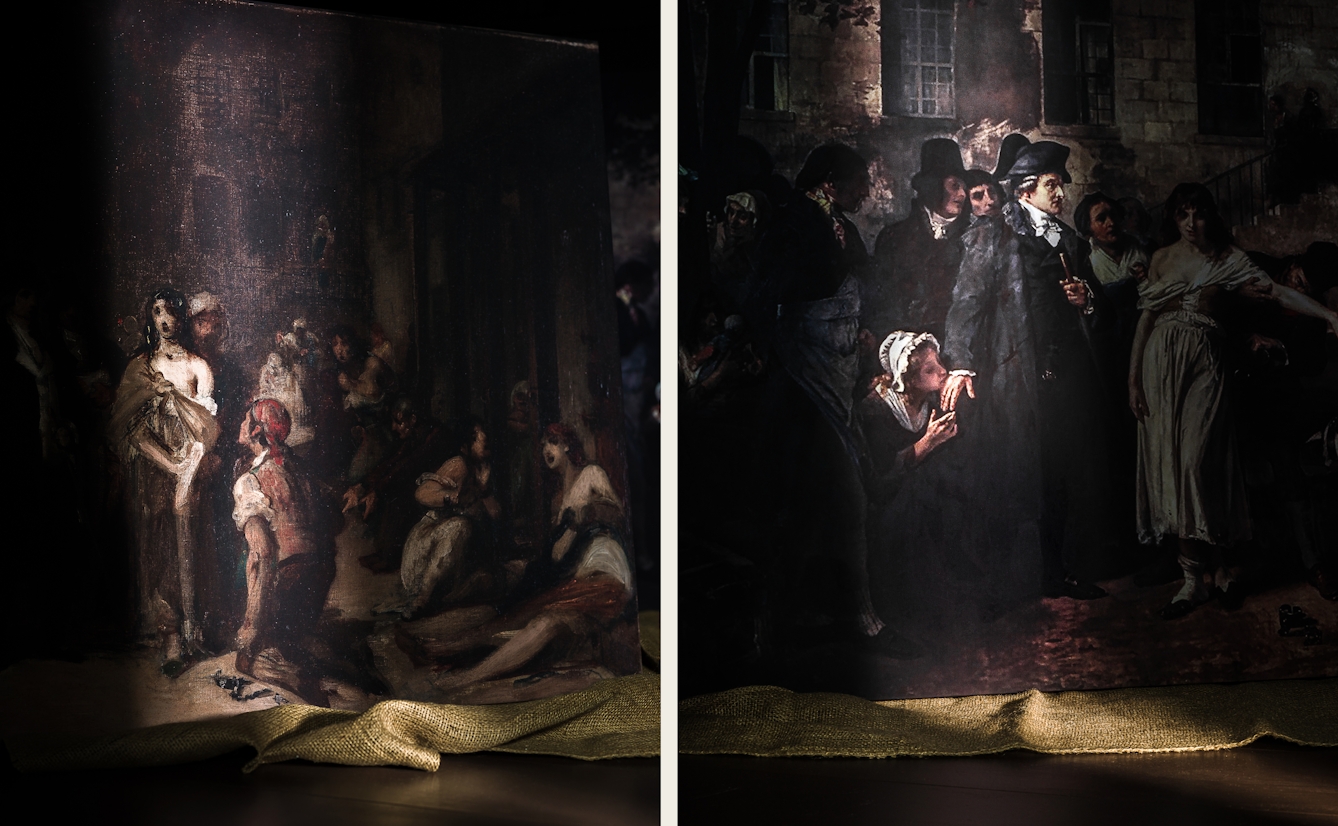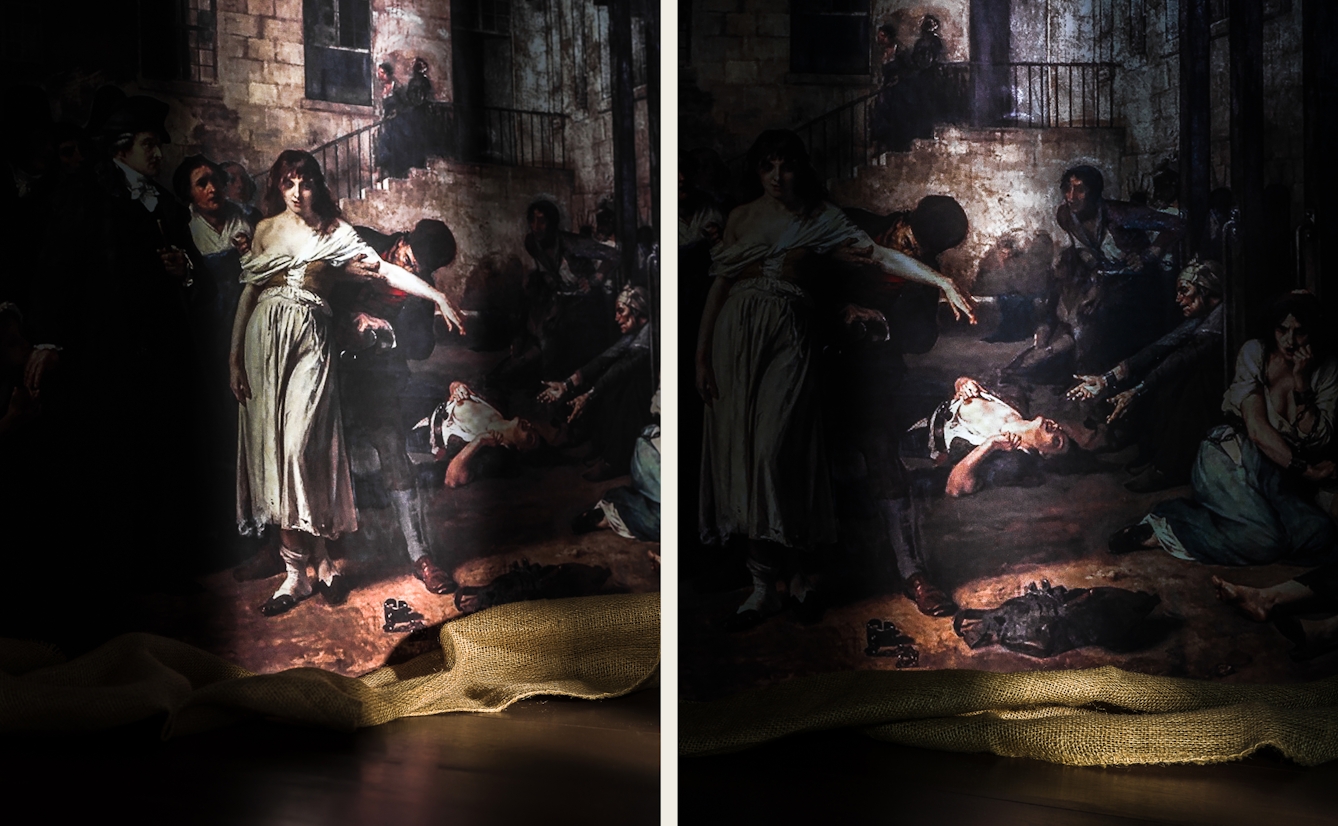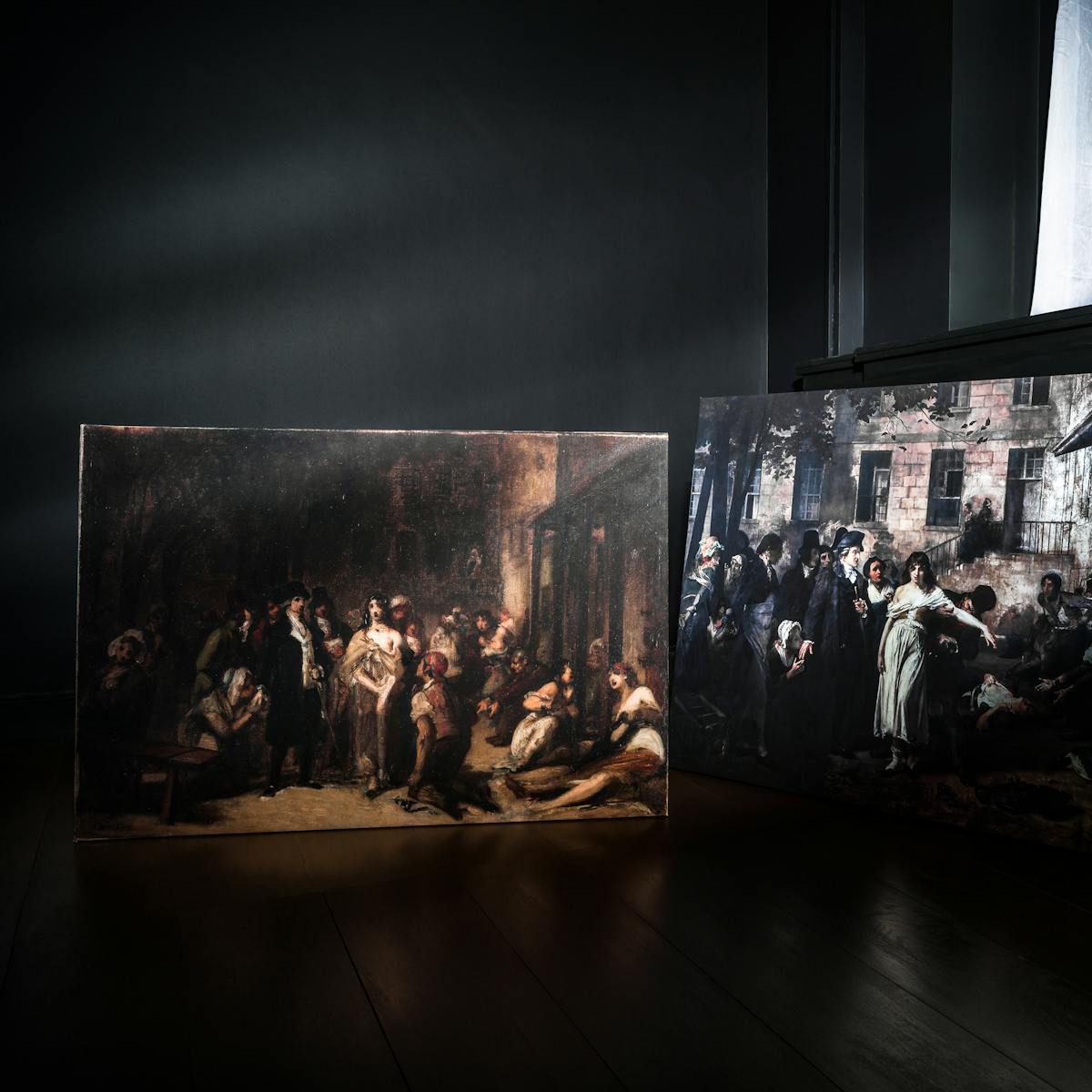An impressive 18th-century painting seems to commemorate a famous moment in medical history, when a compassionate doctor freed psychiatric patients from their shackles. But a contemporary obsession with ‘hysteria’ means the painting tells another story too.
Writing in the ‘Art Journal’ in early 1876, Paris correspondent Lucy Hooper shared the rumour that French painter Tony Robert-Fleury (1837–1911) was “engaged upon a vast painting representing the interior of a mad-house”. This was to become ‘Pinel Freeing the Insane From Their Chains’, and it is likely that the small study he prepared for it was in the artist’s studio at the moment that Hooper was writing her breathless account.
Tony Robert-Fleury was the son of a painter, Joseph-Nicolas Fleury (called Robert-Fleury), who was well known at the time. Tony Robert-Fleury debated whether to study medicine, according to art critic Eugène Montrosier, but he eventually trained to be a painter at the prestigious École des beaux-arts (School of Fine Arts) in Paris, which was the traditional route to achieving artistic success. He was encouraged early on by the successful painter Paul Delaroche (1797–1856), from whom he likely learned to depict historical events in a dramatic, even theatrical, style.
By the time he was commissioned to paint ’Pinel Freeing the Insane’, Robert-Fleury had already exhibited large-scale history paintings such as ’Warsaw, 8 April 1861’ (1866) and ’The Last Day of Corinth’ (1870, now in the Musée d’Orsay in Paris). The latter won the Grand Prize at the Paris Salon of 1870, and was bought straight away by the Musée Luxembourg, the French museum of contemporary art at the time.
The ambitious Robert-Fleury had already made a name for himself by his early thirties, which was when the French state commissioned him to commemorate Philippe Pinel (1745–1826), who had died 50 years before.
A pioneer in psychiatry
Pinel was a product of the French Revolution; he rose through the ranks because of his talent rather than his social status. He was an impoverished provincial doctor who made his way to Paris and, through his innovations in treating the mentally ill, became one of the founders of modern psychiatry. In 1789 he published an important article that outlined a “moral treatment” for certain mental illnesses, which consisted principally of kind but firm human contact.

In Robert-Fleury's study (above left), a young woman stands languidly with her gown falling off one shoulder. In this reproduction of the final painting (above right), a grateful woman kisses Pinel's hand.
In September 1793, Pinel was appointed to Bicêtre, Paris’s hospice for men, where he found ‘incurable’ mentally ill patients who had been chained to the wall – for decades, in some cases. Legend has it that the next year he unshackled approximately 15 men (though the medical historian Dora Weiner and others have presented compelling evidence that, in fact, the patients at Bicêtre were not unchained until 1798, after Pinel had already left).
Several years after becoming head of the medical service of the Salpêtrière, Paris’s women’s hospice, Pinel did the same for almost 50 women who had been ‘chained like dogs’.
Robert-Fleury chose to show us this celebrated moment at the Salpêtrière rather than at Bicêtre. For one thing, in 1849, the French Academy of Medicine had already commissioned a painting of the scene at Bicêtre from Charles-Louis Müller. And for another, painters needed to find an acceptable reason to depict female flesh at the Salon – showing this moment at the women’s hospital allowed Robert-Fleury to titillate his audience.
The patients are shown in the Salpêtrière’s courtyard, deranged or in stupor, their clothes in revealing disarray, signalling their mental illness.
In the study for the painting in Wellcome Collection – as in the final version with life-size figures – the patients are shown in the Salpêtrière’s courtyard, deranged or in stupor, their clothes in revealing disarray, signalling their mental illness. More significantly, it is not Pinel who is at the centre of the image, but a young woman, taking a dramatic step forward towards the viewer. She stands languidly with her gown falling off one of her shoulders. Even though her body is depicted in loose brushstrokes, her illuminated flesh draws the viewer’s attention – it is the lightest part of the canvas and at its very centre.
To her right, Pinel stands with a grateful woman kissing his hand, while the man who has undone the shackles kneels to her left. These two figures especially allude to Pinel’s saviour-like reputation in both national and medical history. Perhaps a response to the increasingly anti-clerical feeling in France during Robert-Fleury’s time, in the final painting, Robert-Fleury toned down the quasi-religious adoration: the kneeling man has stood up and is positioned behind the patient as he removes the restraining belt around her waist.
The open-mouthed women tearing at their own clothes, hallucinating or staring blankly into space on the right side of the canvas are seemingly taken right out of the contemporaneous medical and popular literature on hysteria, which Dr Jean-Martin Charcot (1825–93) reinvigorated in the 1870s with his studies on the illness. At the time, the hysteria ‘epidemic’ preoccupied the French imagination – it was termed “the great malady of the century” by the writer Jules Claretie, among others.

In the final painting, the kneeling man has stood up and is positioned behind the patient as he removes the restraining belt around her waist. To his left an open-mouthed women tears at her own clothes.
The ‘epidemic’ of hysteria
Hysteria had been an enigmatic illness since the time of Hippocrates, but Charcot, head of the medical service at the Salpêtrière, was trying to give it a rational makeover. One of the founders of modern neurology, Charcot believed that hysteria had a neurological basis, though he was unable to find a ‘lesion’ in the brain that could explain it.
He and his colleagues, especially Paul Richer (1849–1933), turned to the physical manifestations of hysteria and mapped out the stages of the hysterical attack in a chart that they hoped could be used by physicians everywhere to identify the illness. In the final version of his painting, Robert-Fleury added a woman writhing on the ground with an arched back in the archetypal hysterical posture (the arc-de-cercle), giving contemporary relevance to his representation of a historical subject.
‘Pinel Freeing the Insane’ was destined for the lecture theatre that Charcot had constructed at the Salpêtrière in the early 1880s, where he ‘exhibited’ patients suffering from neurological disorders, including hysteria. By then, Charcot had made the Salpêtrière world famous as the centre of the hysteria ‘epidemic’. The presence in Charcot’s amphitheatre of a well-known painting of a critical figure in the history of psychiatry – along with the fact that a young medical student named Sigmund Freud got a fellowship to travel to Paris to study under Charcot – has probably contributed to the confusion prevalent today that Charcot was a psychiatrist (who diagnoses and treats mental illness) rather than a neurologist (who specialises in the anatomy and functions of the brain and nervous system).
Hooper gave Robert-Fleury’s ‘Pinel Freeing the Insane’ a lukewarm review when it was exhibited in the Salon of 1876. While agreeing that the finished work showed “intelligence, research, and savoir-faire”, she claimed that it was “less of a success than a grand effort”. Ultimately, Robert-Fleury’s most famous painting reveals more about the time it was created than the historical event it was meant to commemorate.
About the contributors
Natasha Ruiz-Gómez
Dr Natasha Ruiz-Gómez is a Senior Lecturer in Art History at the University of Essex. She specialises in French art from the late nineteenth and early twentieth centuries, with a particular focus on the oeuvre of Auguste Rodin, and is especially interested in the intersection of art and medicine. She is currently completing a book manuscript entitled 'The Scientific Artworks of Doctor Jean-Martin Charcot and the Salpêtrière School: Visual Culture and Pathology in fin-de-siècle France.'
Kathleen Arundell
Kathleen is a freelance photographer working in the culture and heritage sector. She works in a range of museums across London, and loves all things science and art.


